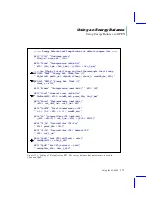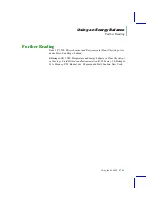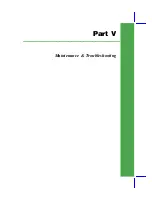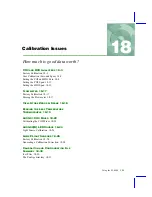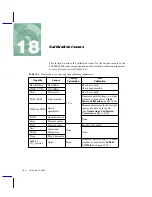
Calibration Issues
CO2 and H2O Analyzers
18-4
Using the LI-6400
18
How Often?
When OPEN first runs, it reads the IRGA and flow meter zero information
(and IRGA span information) from a file
1
, and applies it. This information
gets into these files by your storing it (as described in
on page 18-18). In theory, you shouldnÕt have to re-zero every time
you turn the instrument on, especially if the temperature is essentially un-
changed from the last time. However, if nothing else, zeroing and spanning
serves as a diagnostic on part of the system.
Your own experience should be your guide, but our experience is this:
Zeroing
If conditions (temperature, mostly) havenÕt changed a great deal since the last
time you zeroed the IRGAs, it wonÕt need adjusting. But, it doesnÕt hurt to
check it, as long as you know your chemicals are good, or have a tank that
you know is CO
2
-free. You will do more harm than good, however, if you du-
tifully re-zero every day using chemicals, but ignore the condition of those
chemicals.
Spanning
If youÕve got a standard you trust, then you can adjust the IRGA to match that
standard. It shouldnÕt need subsequent adjusting for months and months,
however. If you donÕt have a good standard, then donÕt bother with the span.
Just leave it alone.
Setting the CO
2
and H
2
O Zero
The procedure for checking the IRGAsÕ zero is part of the daily warm-up
tasks, described in
on page 4-4. If you find that an adjust-
ment is necessary, then do one of the following procedures: use the chemical
tubes to obtain dry, CO
2
free air (described below), or use CO
2
-free air from
a tank (described starting on page 18-7).
Zeroing With Chemicals
While itÕs probably best to use tank air for zeroing, it can be done with chem-
icals. Being able to trust the chemicals to thoroughly scrub the air involves a
certain amount of Òprocedures and practiceÓ, including knowing when and
from where the chemicals were purchased, how and where they were stored,
etc. Just because you changed the chemicals in the tubes recently does not
necessarily mean that they are good.
1.
Ò
/dev/parm1
Ó, if you are curious.
Summary of Contents for LI-6400
Page 1: ...Using the LI 6400 Portable Photosynthesis System ...
Page 15: ...Part I The Basics ...
Page 16: ......
Page 174: ...Making Measurements Answers to Questions 4 56 Using the LI 6400 4 ...
Page 175: ...Part II Useful Details ...
Page 176: ......
Page 200: ...Standard Tools Power ON Hooks 5 24 Using the LI 6400 5 ...
Page 214: ...Real Time Data Real Time Graphics 6 14 Using the LI 6400 6 ...
Page 234: ...Environmental Control Light Control 7 20 Using the LI 6400 7 ...
Page 244: ...Light Sensor Considerations Gallium Arsenide Phosphide GaAsP Sensor 8 10 Using the LI 6400 8 ...
Page 288: ...Data Logging Making Your Own AutoPrograms 9 44 Using the LI 6400 9 ...
Page 289: ...Part III Working With Files ...
Page 290: ......
Page 312: ...The LPL File System Troubleshooting 10 22 Using the LI 6400 10 ...
Page 340: ...Downloading Files Using a Data Capture Program 11 28 Using the LI 6400 11 ...
Page 375: ...Part IV Configuration Issues ...
Page 376: ......
Page 420: ...Defining User Variables Old Style vs New Style 15 18 Using the LI 6400 15 ...
Page 454: ...Using an Energy Balance Further Reading 17 12 Using the LI 6400 17 ...
Page 455: ...Part V Maintenance Troubleshooting ...
Page 456: ......
Page 572: ...Troubleshooting Useful Information 20 46 Using the LI 6400 20 ...
Page 593: ...Part VI Programming ...
Page 594: ......
Page 622: ...Programming with LPL Compiler Directives 22 28 Using the LI 6400 22 ...
Page 846: ...Index I 16 Using the LI 6400 ...




